Three SMU professors named first faculty in residence
Three SMU professors will be the first Faculty in Residence for SMU’s Residential Commons experience.
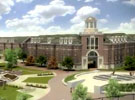
By Kathleen Tibbetts
SMU News
SMU professors Mark Fontenot, Robert Krout and Tom Tunks have been chosen to be the first Faculty in Residence (FiRs) for SMU’s Residential Commons experience.
All three of the first Faculty in Residence – informally dubbed “the Founding FiRs” by Residence Life and Student Housing staff members – have had formative roles in the early stages of the program, says Jeff Grim, assistant director of residence life.
Fontenot has spent three non-continuous years since 2009-10 living in a student residence hall as part of SMU’s Engineering Learning Community.
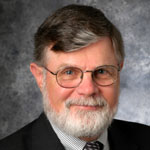 Tom Tunks |
Much of Tunks’ service as associate provost from 1998-2006 and from 2007-2011 focused on how to integrate students’ academic and social lives more closely, from which the Residential Commons program took root. (He returned to full-time teaching as a professor of music in Meadows School of the Arts in 2012.)
Krout helped design the Faculty in Residence position and has served on several subcommittees for the new program; he will move into the renovated Mary Hay Hall this summer.
“It is an incredibly exciting time to be at SMU as the new Residential Commons begin to take shape both physically and philosophically,” says Krout, professor of music therapy in Meadows School of the Arts. “SMU is a very special place for students, staff and faculty, and I feel that the University’s vision, mission, and goals will all come together in a unique and synergistic way through this initiative.”
Each commons will represent in a microcosm the diversity of the entire SMU community, Krout says. “It will be a positive challenge for each FiR to work with students and staff in their Residential Commons to embrace diversity of all kinds. These will be truly integrated academic and residential communities – environments that can become dynamic forces in student academic achievement, personal development, engagement and social life.”
Fontenot, Krout and Tunks will focus on identifying opportunities for students and faculty to interact outside the classroom. The FiRs’ goal will be to “emphasize a culture of mentorship, intellectual discourse, and community that is cultivated in all aspects of the collegiate experience inside and outside of the classroom,” according to the Residential Commons website.
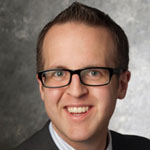 Mark Fontenot |
“Supporting students through the formative college years is very important to me,” says Fontenot, senior lecturer in the Computer Science and Engineering Department, Lyle School of Engineering. “The barriers that exist between faculty and students are too high, and any activity that can break them down gets my attention. In my opinion, being a Faculty in Residence is one of the most important and significant ways to break down these walls.”
During his years as a self-described “guinea pig” for the Faculty in Residence concept, Fontenot has had the opportunity “to more fully understand the life of an SMU undergraduate, the multitude of directions in which they are pulled, and the amazing amount of drive, passion and dedication they bring to this campus,” he says.
“Good teaching is as much about knowing who you are teaching as it is about what you are teaching,” Fontenot adds. “An awareness of life outside the classroom has made me a better teacher inside the classroom. My hope is that by continuing to participate as a Faculty in Residence, I can help more students recognize the benefit of reaching out to their professors on a regular basis.”
A committee of faculty, staff and students met for more than a year to benchmark residential college programs at institutions such as Washington University in St. Louis, Vanderbilt, the University of Pennsylvania, Rice, Baylor and the University of Chicago, Grim says. The Faculty in Residence position description was one result of that work.
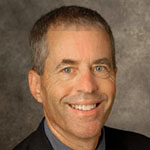 Robert Krout |
Each of the 11 Residential Commons will have one Faculty in Residence. As the programs expands, other faculty members will serve as Faculty Affiliates. In these positions, professors will have opportunities to dine with students and be part of Residential Commons life while living off campus.
The new residential quad currently under construction in the southeast campus provides important support for the program, but the Residential Commons concept “is actually a transformation of our entire residence life experience,” Grim says. During the summers of 2013 and 2014, the University will renovate existing halls to create faculty apartments and expanded RLSH staff apartments. In addition, “every hall will have classroom space either in or around it,” Grim says. The Residential Commons program will be ready to launch in August 2014.
“Students can go to many other schools where they can interact with faculty informally and integrate their academic and social lives together,” Grim says. By providing such an experience, SMU “will be able to recruit and retain students who are interested in developing a life of the mind in their residence halls.”
The program will also help the University “create a kind of blended idea of what it means to learn in college, inside and outside the classroom, and integrate these two ideas into a more seamless learning environment,” Grim says. “I think the Residential Commons as a whole will help establish more of a connection to the campus early in our students’ time with us, and the faculty will help create that.”
There are benefits for the participating faculty as well, Grim notes. “They’ll get to mentor and connect with students both within and outside their discipline. Some of the faculty we work with don’t get to interact with a broad range of undergraduates because they teach only upper-level courses. Through the Residential Commons, they’ll get to work with students who have many different experiences, interests and backgrounds.”
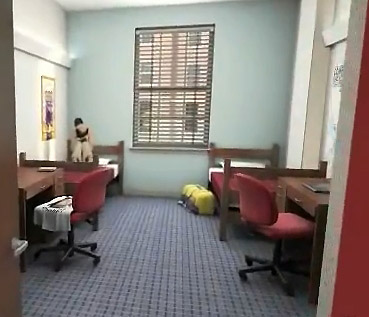 Artist's rendering of student residence. |
Each hall’s live-in residential community director (RCD) will continue to hold responsibilities such as selecting staff, supervising emergency response and creating programming. As part of the Residential Commons “they’ll also be working hand in hand with a faculty member to create an academically focused social community,” Grim says. “The RCDs and the faculty will be partners in creating a seamless learning environment.” Upper-class student resident assistants will also work closely with faculty in this effort, he adds.
Grim expects the eight remaining FiRs to be named by the end of the Spring 2013 term. Faculty members have applied from six of SMU’s seven schools, he adds.
“Most of the FiRs will not be in place until Fall 2014, but we’ll spend this next year developing programs and building relationships so that come 2014, it’s a seamless and easy transition,” Grim says. The Faculty Affiliate pilot program is scheduled to be in place in time for the 2013-14 academic year.
In addition, a group of first- and second-year students called the Residential Commons Student Leadership Corps “will help lead us into the future and discover what we want the Residential Commons to be going forward,” Grim says.
Related Links:
- The Washington Post: Colleges’ newest dorm dwellers: Professors and their families
- Chronicle of Higher Education: Colleges Design New Housing to Engage and Retain Students
- Learn more about SMU's Faculty in Residence selection process and timeline
- Nominate a faculty member to become a Faculty in Residence
- Find answers to Frequently Asked Questions about SMU’s Residential Commons